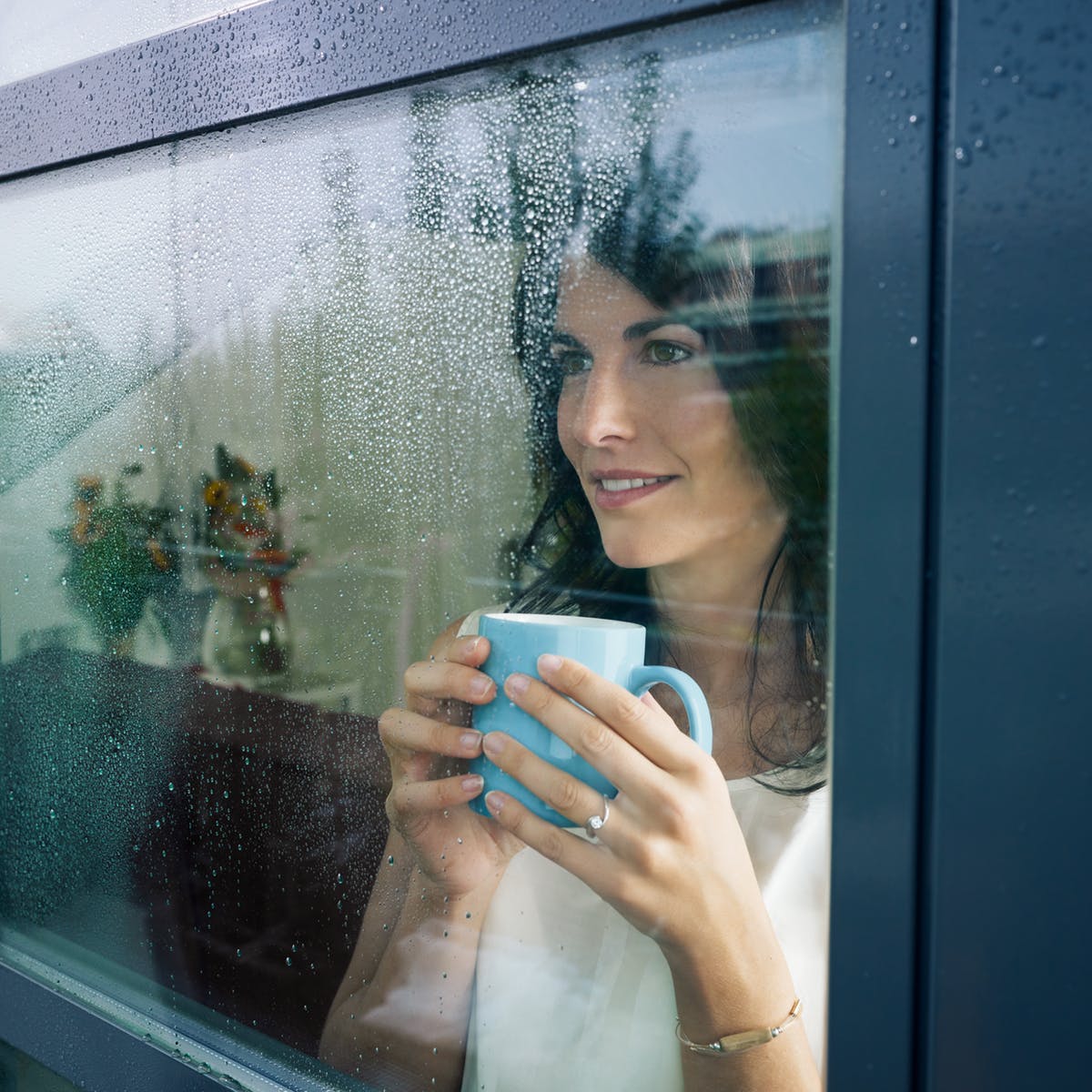With the reported number of excess deaths in elderly care homes in England and Wales now reaching 20,000 (13 March to 1 May 2020)*, Dr Gero Baiarda, an NHS GP responsible for providing care throughout residential homes in Windsor has highlighted the seven main issues causing excess deaths and has presented a seven-step plan to help homes out of Covid-19, reducing deaths every step of the way. The insightful advice has been written based on his first-hand experience of what is happening today, and also looks at the broader longer-term impact the pandemic will have on elderly care homes.
NHS GP Dr Gero Baiarda is one of the hundreds of GPs currently on-call at GPDQ – the UK’s leading GP-on-demand service – he is also an NHS GP at the Clarence Medical Centre in Windsor.
Since launching his ‘myth-busting’ series during the Covid-19 pandemic, Dr Baiarda has become the media ‘go-to’ for information on what to believe in the interest of our health during the Covid-19 pandemic. This latest opinion piece reveals how a GP’s role in keeping elderly care home residents well has become near-impossible, due to decisions made by national and local government, and what must be changed to reduce the number of elderly residents dying prematurely, or unnecessarily.
Setting the scene
At the beginning of this crisis, the UK public was informed that those most at risk were the elderly and anybody with an underlying health condition.
It is likely that this information was intended to reassure the majority of the population who do not land in either of these camps. However, if you were on a mission to identify a sector of our community to which both categories were not only relevant, but were concentrated in one static location like a quarantined cruise liner, you would have to look no further than the UK’s residential or nursing homes.
Unsurprisingly, we learned last month that the number of elderly care home residents who have died from Covid-19 was possibly as much as five times higher than the Government’s official estimate. When you figure that up until that point, only the first five suspected cases in every care home setting were being formally tested in order to identify an outbreak, it seems likely that even this is an underestimate.[1]
Further compounding this low number of recorded deaths was the fact that official figures excluded long-term care home residents with Covid-19 who were admitted to hospital and subsequently died. New data published in the BMJ on the 29th April now states that there were 4,343 deaths from Covid-19 in care homes in England and Wales in just a fortnight.
However, with the poor access to testing that is still a reality for many elderly care home settings, the numbers could be higher still. In fact, research by London School of Economics academics suggests that if the UK follows international trends, care home deaths from Covid-19 could be closer to 50% of all UK cases. This would be in line with the figures emerging from Ireland, France, Italy, Spain, Portugal, Ireland, Belgium, Norway and Canada, where the national proportion of total Covid-19 deaths is reported at between 33 percent and 64 percent.[2]
Further supporting this hypothesis are figures from the Office for National Statistics which show that deaths from all causes in care homes rose by 48.5% in a week compared to a 10% increase (from 8578 to 9434) in hospital deaths during the same time frame, and an 11% increase (from 4117 to 4570) in deaths in private homes. Today we learn from official statistics that nearly 10,000 care home residents, or 26% of all cases, have died from Covid-19 in the UK since the crisis began, but that the true figure could be as much as 43,000.
As measures are introduced this week by the Prime Minister which will see tens of thousands returning to work, and a pathway to eventual relaxation of lockdown, it appears that deaths in this sector are still largely going overlooked. Below, I seek to provide a clear insight into why this has happened, what the current situation is, and what might be done to address the care home crisis that is continuing largely unchallenged.
Why have the numbers of Covid-19 deaths in care homes been underestimated?
- Inadequate testing
- During a crisis in which even symptomatic frontline NHS workers have struggled to access testing, it is easy to see how elderly care home residents have been placed very far down the pecking order. And yet, without adequate testing of every symptomatic resident, how are we ever going to get close to the true number of deaths in UK nursing homes that have arisen from infection with Covid-19?
- The human impact of insufficient testing goes far beyond the repercussions of inaccurate statistics. Care workers with symptoms must isolate at home until they test negative, which then leads to fewer workers assisting more of the residents, with the inherent heightened risk of infection for all involved.
- The UK government’s recent statement on easing lockdown measures has not clarified whether visiting elderly care home residents is now fully permissible. Elderly residents with symptoms who have not been tested are routinely isolated and no longer permitted visits from family members. Some of these residents will be in their final days of their lives for reasons other than Covid-19, and yet will not be allowed the comfort of having loved ones come visit them. In short, without adequate testing taking place on site, we often do not know what we are dealing with, and residents are still dying without saying goodbye in person.
- Family members play such a crucial role in end of life scenarios. Without their presence, the emotional strain on family and carers alike can be unbearable. A negative viral antigen test would help ease this enforced isolation and afford some dignity to our elderly in care homes, not to mention closure for their loved ones.
Any bereavement is hard enough, but can be unbearable when we are denied the fundamental right to say goodbye.
- Data Lag
- Deaths take time to register and appear on official statistics, especially in the current locked down climate. According to the Department of Health and Social Care, it takes at least 11 days for deaths in care homes to enter the official data, with death registration taking a minimum of five days.
- The official UK Covid-19 death toll only started to include deaths outside hospitals a few weeks ago. As of the 15th April, Public Health England’s official figures claimed that there were only 3,084 care homes in England with confirmed cases. A month later, the official death toll for care home residents is 10,000.
- As recently as four weeks ago, the Office for National Statistics was still suggesting that 85 percent of all UK Covid-19 deaths were occurring in hospitals. Clearly, there was no way of corroborating this figure when there had been so little effort to gather accurate data from care homes. The new figures suggesting that 26% of all Covid-19 deaths have occurred in care homes is very much at odds with this earlier suggestion.
- World-renowned statistician, Sir David Spiegelhalter of the University of Cambridge, suggested on the 1st May 2020 that the incidence of Covid-19 deaths was higher in UK care homes than hospitals. He continued that, although the Prime Minister suggested that we were over the peak in the UK as whole, deaths in care homes were yet to peak. His predictions appear increasingly to have the ring of truth.
What is perpetuating the crisis?
1. Lack of adequate planning and testing
- Care homes are as much on the frontline as General Practice, yet no contingency was put in place for this foreseeable situation. There is still no significant plan in place for how medical attention and testing should be delivered. We knew all along that the elderly and those with underlying health issues were the two most vulnerable groups.
- As of the week ending 19th April, only 505 care home workers had received Covid-19 tests in comparison to nearly 48,000 NHS staff and their families.[4] Even late last month, three quarters of more than 200 providers contacted by the BBC said none of their staff had been tested for the virus.
- What access is being offered is often far too distant for many carers to reach. Care home staff are being invited to testing sites sometimes 100 miles from their location. On site testing for residents and carers alike would seem the logical solution.
- Inadequate medical input
- The central principle of the practice of medicine is, ‘First, do no harm.’ Because of this, many medical colleagues have ceased the regular review of care home residents which, up until the crisis struck, occurred weekly. GPs are overwhelmed by fear of contaminating elderly patients with an infection from which they are never likely to recover.
- GPs have also known for months that care homes are hotbeds of Covid-19 infection. GPs and carers alike are then left in a situation where, if they do what every instinct suggests by attending to the sick elderly, they run the considerable risk of not only becoming infected themselves but also passing the virus on to their families at home. This fear is compounded by an often-inadequate supply of PPE at homes.
- The result has been massively decreased rates of GP visits to care homes, with telephone consultations taking their place, or video call if the home has technology in place. Residents and carers alike are feeling forgotten and abandoned. There have been moves within recent weeks to move to UK-wide remote ward rounds done over video-link. Some GP practices have delivered this kind of review throughout the crisis, but there has only been patchy provision of this sort of service throughout the UK as a whole.
- Elderly care home residents are not being admitted to hospital
- Aside from emergency situations in which paramedics are called, GPs bear sole responsibility in the community for making the decision whether to admit patients to hospital.
- Although GPs are informed when their local hospitals are at maximum capacity, they are not usually made aware when occupancy crises have eased to more manageable levels, and have tended to assume that hospitals are always full to the brim. In fact, many A&E departments throughout the UK are reporting record-low attendances.
- Subsequently, GPs do not have enough up-to-date information to make an informed choice as to whether they are seeking admission for an elderly and vulnerable patient to a hospital that is already straining at the seams. When all variables are considered, it may sometimes present less risk to the patient to stay at home. The fear that many GPs have had is that the elderly patient they choose to admit to a hospital with limited resources would be side-lined for younger patients seriously ill with Covid-19 who face a higher realistic chance of survival and recovery. There are only so many ventilators, and the famous ‘R Figure’ we have heard so much about in recent weeks is only just teetering below 1.
- Even if the GP does decide that the best place for the patient is in hospital, it is often the case that residents, their carers’ and family members are extremely reluctant to agree to admission for fear of contracting and dying from Covid-19 once admitted.
- There have been numerous reports of Clinical Commissioning Groups (CCGs) urging GPs and care home managers to ensure they have do-not-resuscitate orders (DNR) signed by their residents. This is often interpreted as a licence to avoid admission and allow nature to take its course at home.
- Rapid, unsupported, and disconnected discharge from hospital
- On 17th March, NHS England wrote to hospital bosses and advised them to seek to actively discharge patients to free up 15,000 acute beds for people with Covid-19.
- Many of these patients were elderly, and part of the recommended guidance for effective discharge included giving patients the direct telephone number of the ward from which they had been discharged. They were urged to call if they need further help or advice rather than contact their GP or visit A&E.
- Many of those discharged have kept slavishly to this advice and continue not to seek any further medical help whatsoever even 2 months down the line.
- Little or no PPE
- Personal Protection Equipment has only really been prioritised for hospital use since the crisis began, with even GP surgeries struggling to access adequate supplies, let alone care homes. However, it is close to impossible to care for elderly residents without subjecting both them and staff to considerable risk of cross-infection without it.
- PPE ideally should be changed prior to each new interaction with a resident, but scarce supplies in most care homes will not allow this. Carers are left to treat residents with little or no PPE or wearing the same gowns and masks for multiple patients. Spend a few minutes on social media and you will easily find care home staff sharing their experiences of washing their PPE each night before their next shift.
- Unlike any other frontline service, care homes are still required to pay VAT on any PPE that they manage to source. They are often also having to source this equipment privately and at exorbitantly inflated prices, something that is unsustainable for any period in view of the cash-flow crisis many of these homes are facing.
- Almost certainly because it is such a scarce and expensive resource, many care workers report that PPE is being locked away and rationed; they are being advised that they either do not need to use it because residents do not currently have viral symptoms, or that they should make gowns and gloves last all week. This puts residents and staff at risk. UNISON’s PPE alert hotline has received more than 3,500 messages from scared employees since it was established stating that they are worried for their residents, themselves, and their families.
6. Care home staff sick, isolating or too scared to work
- Some carers are so frightened of contracting the virus that they are refusing to work, while others with symptoms but no access to testing are self-isolating.
- It should not be forgotten that this was a sector that already faced problems with recruitment because of low pay and long hours. The addition of considerable personal risk to life has led to some carers abandoning the role altogether.
- This means that the same high workload is now being shared between far fewer carers, which increases the risk of exposure to the virus for residents and care home workers alike. The same carers, often in inadequate or unchanged PPE, are having to deal with more residents in less time within the same working day.
- No requirement for testing before admission to a care home
- UK Government guidelines suggesting new residents to care homes are tested for Covid-19 prior to their admission have only recently been put in place and are not being consistently applied. They are not even a universal requirement throughout all UK home nations, with Scottish care homes still permitting admission to residents without testing as recently as last week. Other elderly UK residents are still being admitted with the understanding that they will receive a test within a few days of arrival. This allows more than adequate opportunity for rapid spread within the home at which they arrive.
- This allows a clear avenue of infection into otherwise safely contained homes, especially when cash-flow is such a major issue for so many residences.
- It is inevitable that some of these new residents will be carrying the virus whether they have symptoms at the time of admission, or not.
What should be done? Here is a 7-step approach to reducing the death toll in the UK’s elderly care homes:
It is often said that the mark of a civilised nation is how we treat our most vulnerable. The UK is failing our elderly and ‘at risk’ groups and, up until this week, was not even gathering the data that would prove this. There are six simple measures that should be taken to remedy the situation.
- Adequate PPE – Care home staff are as much at risk as frontline clinicians in A&E, and yet are on a fraction of the salary. They should be afforded the same level of access to PPE protection without care homes facing the financial sanction of having to pay profiteers exorbitant prices or VAT to the Government.
- Adequate Testing – All care home residents and staff demonstrating symptoms should have near instant access to testing. In the case of carers, this would allow them to continue to provide much-needed support, and in the case of residents, this would allow them to continue to draw comfort from their families if they test negative yet are ailing. Care homes could then set about isolating to their rooms only those who test positive.
- Access to dedicated care home medical teams – Full PPE Hot Hubs and Hot Car visiting services dedicated to the treatment of patients with proven or suspected Covid-19 have popped up all over the country. There is no reason that similar dedicated provision could not be provided for care homes. This would provide considerable support, reassurance and comfort to residents, their families, and their carers alike.
- Regular symptom checking – The Government suggested last month that all residents should be assessed twice a day for Covid-19 symptoms including cough, shortness of breath and a high temperature. This is all well and good, but there was no simultaneous pledge for provision of adequate PPE and access to rapid testing, something that would be indelible to such checks taking place safely. However, it is feasible that dedicated care home health teams could provide this service if they were established across the UK.
- Improved, more regular communication between CCGs, GPs and hospitals – this would enable GPs to understand what capacity hospitals have when making important decisions regarding hospital admissions. The discharge procedure should also be reverted back to normal, meaning the GP is updated and can continue to provide care themselves or through the Hot Hubs and Hot Car visiting services.
- Accurate Data – It is easy to ignore what we cannot see. The Government pledged on April 28th to publish accurate data on Covid-19 deaths in care homes alongside those occurring in hospitals. This data will include figures from the ONS and the CQC. Since 10th April, care homes have also been required to notify the CQC within three days of any resident deaths due to confirmed or suspected Covid-19 cases. This is a very recent development and we are now many months into the crisis.
- Integrated Health and Social Care provision – This crisis has taken the UK government and NHS infrastructure completely unawares, and we need to take steps now to minimise the chance of any future recurrence. Care homes feel detached and isolated because they really are very separate from other UK health and care provision. This has left them inadequately supported in terms of training and a consistent and reliable supply of PPE. This deficit in structuring was highlighted in an editorial published in the BMJ last month which suggested that, “The current emergency has exposed once again the need for a universal integrated health and social care service.”







